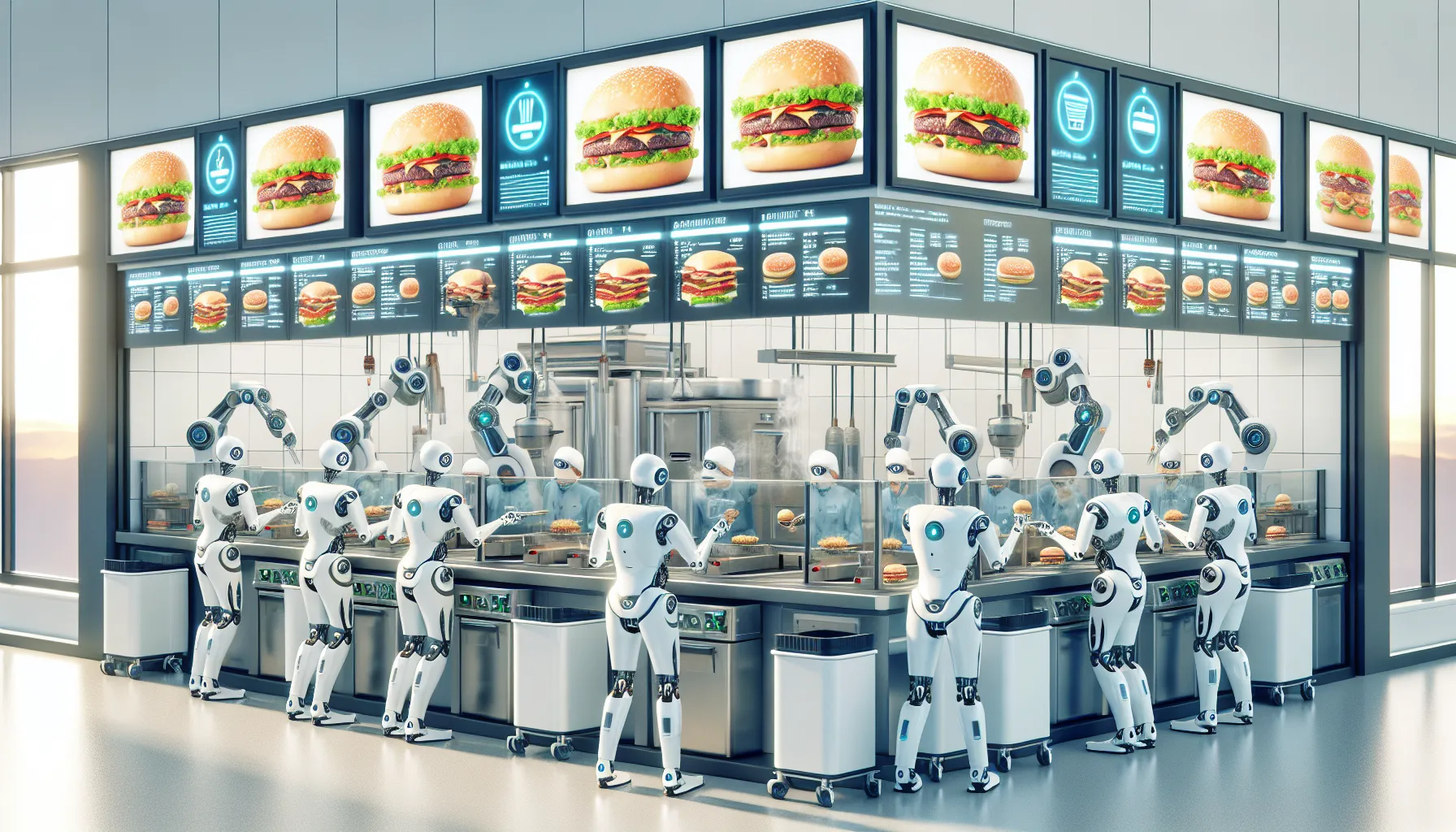
A new fast-food establishment, BurgerBot, is making waves in the restaurant industry by employing robots instead of humans to prepare meals. The automated restaurant features robots that handle the entire burger assembly process without requiring breaks or time off.
The restaurant offers “cold, hard efficiency” in food preparation, eliminating common human-related issues in food service. According to information about the establishment, the robots can work continuously without needing sick days or bathroom breaks, and they advertise that customers won’t find “curly hairs in your buns” — a selling point focused on improved food hygiene.
Automation in Fast Food
BurgerBot represents a growing trend of automation in the food service industry. The restaurant has positioned its technology as a solution for tasks “humans aren’t interested in,” specifically mentioning burger assembly lines as work better suited for machines.
This development comes when many fast-food establishments struggle with staffing issues and high employee turnover. The robot workers offer restaurant owners consistent operation without the challenges of human resource management.
Economic and Labor Implications
The introduction of fully automated restaurants raises questions about the future of employment in the food service sector. Fast food has traditionally been a significant employer, particularly for entry-level workers and those without advanced education.
With statements like “the robots are taking our jobs,” BurgerBot acknowledges the displacement of human workers while framing it as an inevitable progression. The restaurant appears to be marketing this automation as a feature rather than a drawback, suggesting that the tasks being automated are ones humans don’t want to perform anyway.
Labor economists have long predicted that routine, repetitive tasks would be the first to be automated. With its standardized procedures and limited variation, Burger assembly fits perfectly into this work category ripe for technological replacement.
Customer Experience and Food Quality
BurgerBot emphasizes hygiene and consistency as key benefits of its robotic food preparation. The absence of human contact with food ingredients potentially reduces contamination risks and provides standardized portion control.
The restaurant’s focus on “no more curly hairs in your buns” highlights consumer concerns about food preparation cleanliness that robotic systems might address. The automated system would theoretically produce identical burgers in composition and quality, eliminating the variability that comes with human preparation.
However, questions remain about how customers will respond to the absence of human interaction in their dining experience, and whether the consistency of robot-made food will compensate for the loss of the human touch in food preparation.
As this technology expands, consumers will ultimately decide whether efficiency and standardization outweigh the value of human craftsmanship in food service. Meanwhile, BurgerBot is an early example of what could become a standard model for fast-food operations in the future.











Angela Ruth
My name is Angela Ruth. I aim to help you learn how Calendar can help you manage your time, boost your productivity, and spend your days working on things that matter, both personally and professionally. Here's to improving all your calendars and becoming the person you are destined to become!